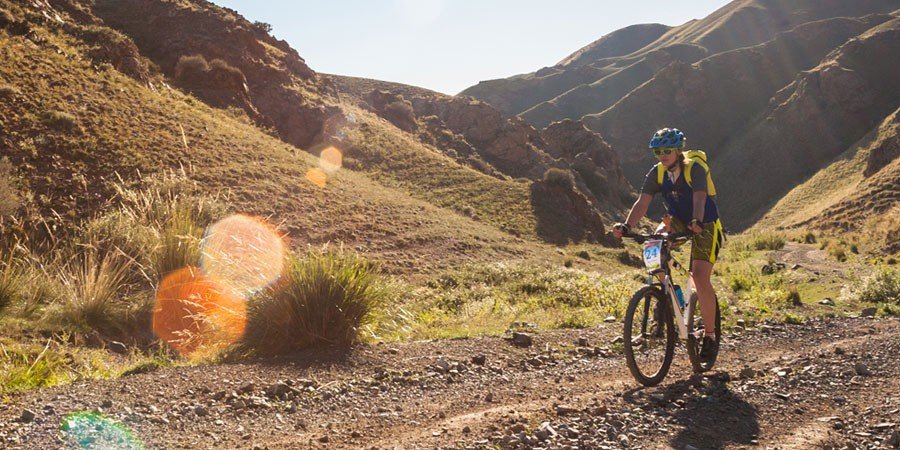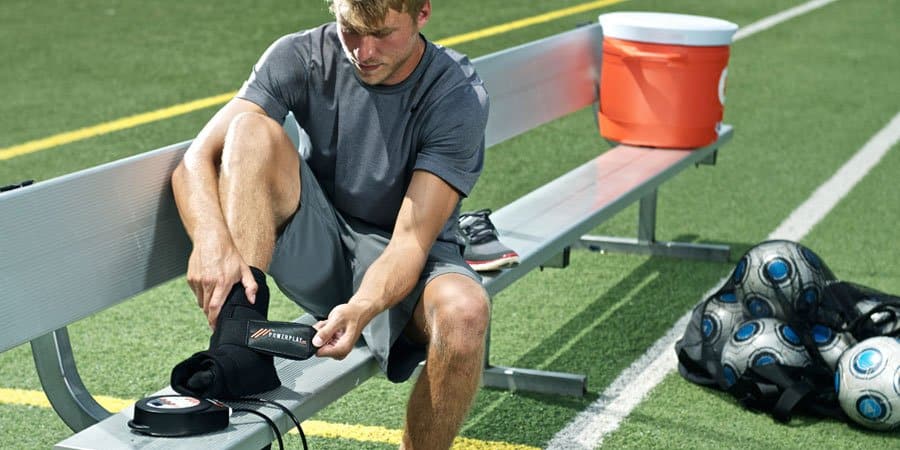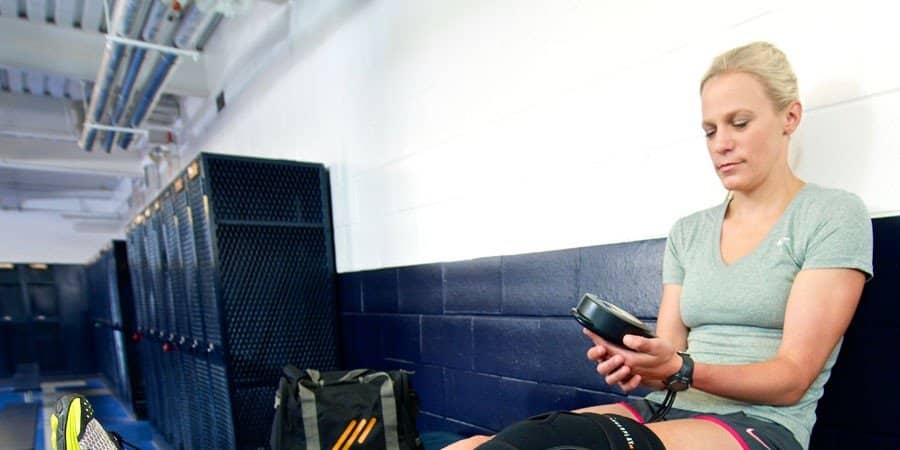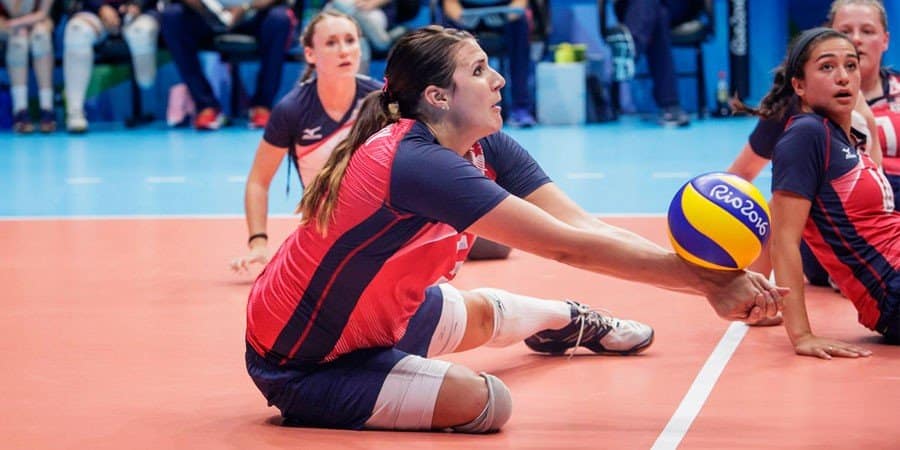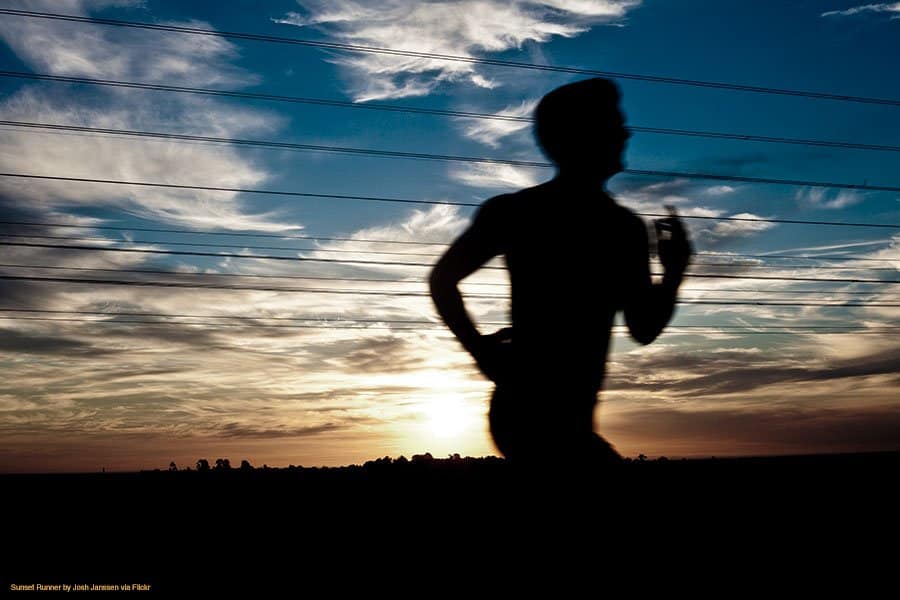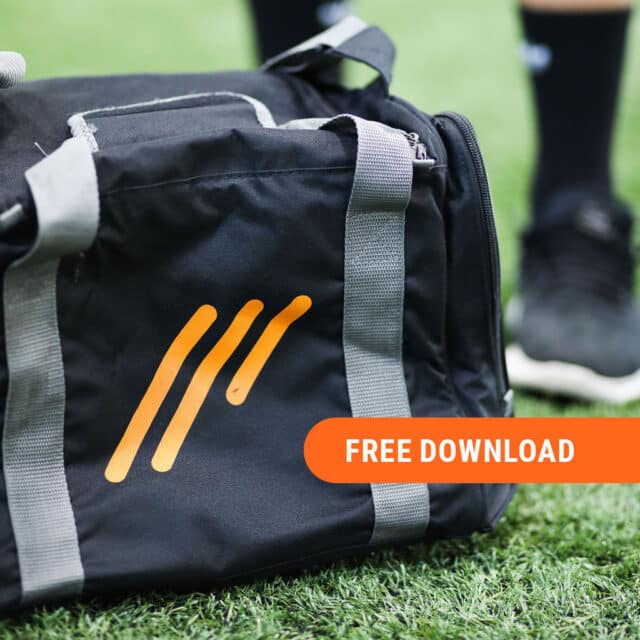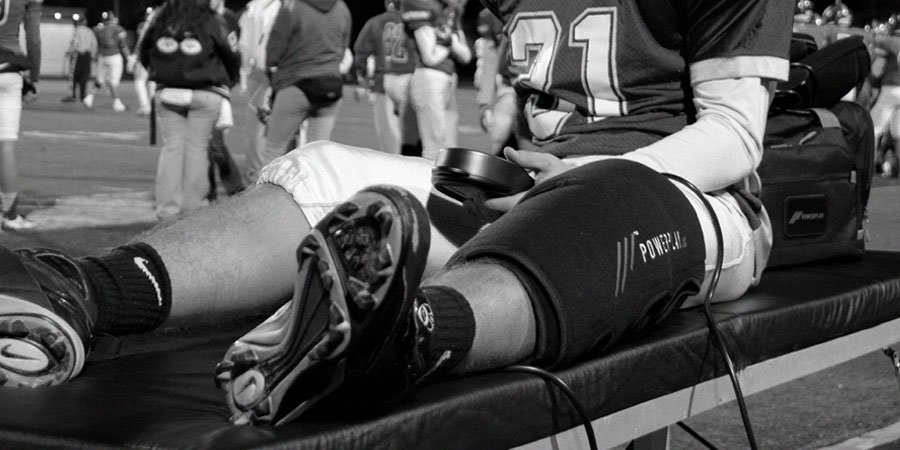
Trainers have various reasons why they chose to pursuit athletic training. But, for the most part, athletic trainers have two common traits: a genuine love for sports and the desire to help people.
The Bureau of U.S. Labor and Statistics says that this industry projects a 17% growth over the next decade. As the role for athletic trainers continues to grow, there are lots of opportunities as far as traditional athletic training on the sidelines of a college football game to in the pits at a NASCAR race or even private practice.
PowerPlay often partners with athletic trainers to provide cold compression therapy to their athletes. And while many in the field have various tools they utilize in their recovery kits, we’ve found that trainers in various roles have interesting ideas and techniques to bring to the table.
Check out this Q&A from three PowerPlay athletic trainers Casey Paulk, Dan Newman, and Leander Walker.
Q: What was your path to becoming an Athletic Trainer, and why did you choose this career?
Paulk: I chose athletic training as career for many reasons. I suffered a hamstring injury at a summer baseball camp before my senior year of high school. This was my first significant injury and it sidelined me for weeks. I did not have an athletic trainer nor did I go to a physical therapy clinic for treatment and rehab. During the time I was sidelined two of my friends and teammates of mine suffered significant knee injuries. One tore his ACL and the other suffered a severed peroneal nerve. Being on the sidelines and wanting to make sure they were ok, they described their symptoms. It interested me and challenged my thinking to figure out what the injury was.
Another reason athletic training was the specific career I wanted to be involved in occurred to me during a Thanksgiving trip to Hawaii my senior year a few months later. My brother played Division I college basketball and they were in a tournament there. I noticed that my brother had a great relationship with the athletic trainer. The AT was in Hawaii, on Thanksgiving, with his family, eating at nice restaurants, watching college basketball. The lightbulb came on and I said, “That has to be the coolest job!”
I loved college basketball and baseball. I knew I wanted to work with sports and I knew I liked helping people who were hurt. Athletic Training was the career that perfectly combined both of these things. This was the beginning of the path I took that finished with my bachelors of athletic training from Southwestern Oklahoma State University.
Newman: My path to athletic training was not typical in the sense that I wasn’t an athlete who sustained a career-ending injury and worked with an AT, but it was a common one; I loved the idea of medicine and sports, and it always intrigued me on what happened on the sidelines, dugout or court side – I wanted to be down in the action. It wasn’t until my senior year in High School that one of my mentors, now colleague, introduced me to the profession of athletic training. Two schools and 9 years later I received an undergrad degree in AT from the University of Tulsa and a Masters degree in Kinesiology from the University of Nevada, Las Vegas. In 1996 I became certified and have not looked back since.
Walker: I was a former three-sport athlete and came from a family that was consumed with athletics from coaching to playing. I graduated from a high school that didn’t have an Athletic Trainer and so I had no exposure to what an Athletic Trainer was. While attending the University of Oklahoma, planning on applying to Physical Therapy school. During my observation and met an Athletic Trainer working in a clinic and doing outreach to local high schools and fell in love with the profession. I made some phone calls and the next fall was attending Southwestern Oklahoma State University majoring in Athletic Training. It was the best decision I’ve ever made.
Q: What is the most rewarding part of being an Athletic Trainer?
Paulk: The most rewarding parts of being an Athletic Trainer is helping an athlete return to play after their injury to the same high level they were playing at. Another is guiding high school students into a career in Athletic Training. It is also very rewarding when the parents/athletes/students say THANK YOU.
Newman: The most rewarding part of being an AT is the ability to help change and make this profession not only myself, but for the entire athletic training community. The late Pat Forbis asked me what I was doing to make athletic training better and I couldn’t answer. It was at that point on not only would I give a full commitment to my job but my full commitment to my profession.
I believe my leadership role in the Oklahoma Athletic Trainers’ Association and now my work on the Secondary Schools Athletic Training Committee have be some of the most rewarding moments of my career. Seeing first-hand the power of involvement and its ability to change people and policy. I am not afraid to talk to people about who I am and what I do. We as ATs must be our biggest advocates.
Walker: The most rewarding thing to me is getting to work with athletes on a daily basis and having the interactions with them, not just on a professional level as an Athletic Trainer, but on a more personal level – getting to play a role in molding them into adults. It is also rewarding to be surrounded by other Athletic Trainers, athletes and coaches who are self-motivated and are always looking to improve themselves.
Also, my involvement in the Oklahoma Athletic Trainers’ Association and the National Athletic Trainers’ Association has been unbelievably rewarding. I feel like as professionals we have to do what we can to improve our profession and ensure that every athlete has access to an Athletic Trainer.
Q: What is the most common injury you see in high school athletics, and how do you treat it and/or prevent it?
Paulk: I would say ankle injuries are the most common injuries seen in high school athletics. Doing functional rehab exercises to increase the strength of the muscles associated with the ankle.
Click here for an ankle injury recovery guide.
Newman: In the secondary school setting we see a lot of different injuries – of course we see our share of ankle and knee injuries but over the last couple of years we have been seeing a lot of overuse injuries in our student-athletes. Gone are the days of the 3-sport athlete and the 4-month season; as the saying goes “there is no off-season.” My biggest tool in this battle is education. We as athletic trainers must be able to educate not only our student-athletes about this, but parents and coaches alike. There must be a happy balance between work and rest and know when to scale back and when to push harder.
Walker: Working in the high school setting we see a number of different injuries and that is what makes this career so challenging. You never seem to have the same day twice. I’d say the most prevalent injuries are musculoskeletal injuries to the lower extremity. We try and do as much education and therapeutic intervention early to prevent a loss of time from athletics. Once we have an injury we manage the initial injury with cold and compression and then move towards the rehabilitation process to ensure proper healing. PowerPlay is a resource that we use daily because it plays a vital role in the initial management of our injuries and the fact that it’s portable allows us to use it on the sideline or on the road.
Q: What new technologies and/or products should Athletic Trainers be aware of?
Paulk: I think the systems to help identify athletes’ weak musculoskeletal areas are beneficial right now. Corrective exercise and functional assessment products are beneficial to help prevent injuries.
Newman: I believe technology in and out of the athletic training facility can be a huge assets to an AT arsenal, but at the same time we must not forget about the basics. In our athletic training facility we have increased our manual therapies and scaled back some of our use of the traditional electric modalities. On the other hand technology has made the simple things that much better as in cold compression devices. Devices like PowerPlay have made the benefits of having cold/compression right at your finger tips; a device that is extremely affordable, easy to use and portable.
Walker: I have been blessed with a facility that is amazing so we have almost everything you could imagine. As a clinical instructor for 2 universities I always limit the modalities they can use to challenge them to improvise with minimal resources. We have gone to a lot of manual therapies in our facility. One thing we emphasize is the initial 48-72 hours post injury and the proper management using a number of resources with PowerPlay being one of our “go-tos”.
Click here to learn more about cold and compression therapy for athletic trainers.
Q: How often do you use cold and compression therapy to treat your athletes, and what are the benefits?
Paulk: Cold and compression therapy is used almost daily to treat athletes’ injuries. This type of treatment helps decrease pain, inflammation and swelling, therefore, increasing the athletes’ return to play.
Newman: We use cold therapy along with compression every day in our athletic training facility. It is vital in the treatment of acute injuries and chronic injuries alike. PowerPlay has really allowed us to have a dual threat of ice and compression right at our finger tips. I feel the compression alone is vital in battling acute swelling, and along with the cold will help reduce pain and swelling at the same time.
Walker: We use cold compression daily in our Athletic Training facility. After an initial injury and post therapeutic exercises. PowerPlay allows us to utilize both cold and compression to get our athletes back on the field as soon as possible.
